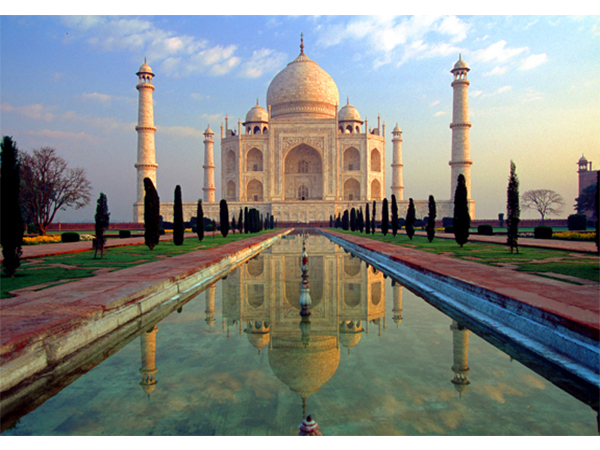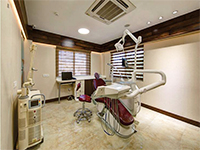India - High Standards Dentistry

Country Profile
India, officially The Republic of India, home to the ancient Indus Valley Civilization and a region of historic trade routes and vast empires. It is a pluralistic, multilingual and multi-ethnic society and is also home to a diversity of wildlife in a variety of protected habitats. India is the second most populous country in the world, nearly a fifth of the world's population. New Delhi, capital city of the country, you may hear all the languages spoken in India including Hindi, Punjabi, Tamil, Urdu, and English. This city is one of the most ancient cities in the world, characterized by its historical monuments, forts, and buildings. The city is a home to many significant government agencies, including the Parliament of India, making Delhi the commercial and political hub of India.
India's telecommunication network is the second largest in the world based on the total number of telephone users (both fixed and mobile phone) and has the world's third-largest Internet user-base. Major sectors of the Indian telecommunication industry are telephone, internet and television broadcast Industry.
English remains at the heart of Indian society. It is widely used in the media, in Higher Education and government and therefore remains a common means of communication, both among the ruling classes, and between speakers of mutually unintelligible languages.
India has a tropical climate with high temperatures and dry winters and the best time to visit is between October and March as the monsoon is apparent throughout the country between May to September.
India is already famed for its yoga and meditation, and now it is catering to tourists’ smiles, having recently become a hub of dental care.
The medical hot spots are Bangalore, New Delhi, Kolkata (Calcutta), Ludhiana, Chennai and Hyderabad. International flights come into the 17 major airports, which are spread across this vast country.
So, with private facilities equal to European counterparts, efficient, multilingual doctors and dentists, coupled with massive savings on surgery, India is worth considering for medical tourism.
Indian Dental Industry
The Dental Council of India - a statutory body - is constituted by an act of parliament with a view to regulate the dental education, dental profession and dental ethics. They maintain the uniformity of standards of Dental Education – both at Undergraduate and Postgraduate levels. They prescribe the standard curricula for the training of dentists, dental hygienists, dental mechanics and the conditions for such training and lastly, they prescribe the standards of examinations and other requirements to be satisfied to secure for qualifications recognition under the Act.
As one of the key players in medical tourism there is a growing need for accredited hospitals, to ensure best practices in a safe environment. The Ministry of Health and Family Welfare is the body which ensures this quality in the hospitals and clinics and many hospitals are also applying for ISO 9001 accreditation, which is a non-governmental body, to raise their profile.
The Medical Council of India is the main organisation and doctors need to be registered in order to practice. The Indian Medical Association looks after the interests of doctors as well as the community in which they practice. The Indian Health Care Federation (IHCF) is an independent non-statutory body which liaises between government, health providers, medical equipment manufacturers and other medical institutions. IHCF has a membership of around 300 members from across India and is affiliated to the Confederation of Indian Industry (CII).
The Indian government is working on establishing minimum quality standards to reassure patients seeking treatment abroad and the Joint Commission International USA is the Gold Standard accreditation for US and European hospitals which represents provision of the highest levels of patient care and patient safety.
Getting There
With most overland routes into India (except from Nepal) effectively blocked by closed or trouble-prone borders, the only practicable way of getting to India is by plane through Indira Gandhi International Airport (DEL). There are numerous nonstop services from the UK, plus a few from North America and one from Australia. Most of these arrive at either Delhi or Mumbai, although there are also nonstop flights from the UK into Kolkata, Chennai and Bengaluru.
The present transport system of India comprises several modes of transport including rail, road, coastal shipping, air transport, etc.
Visitor Highlights
With Greater Himalayas forming the crown of incredible India to the Arabian Sea that washes the shores of the nation in the South and from the golden deserts in the West to the culture and tribes of East, when it comes to tourist attractions in India and places to visit, there is so much to see and do in that could keep even the fussiest of travelers busy.
Attractions in India include mountains, monuments, beaches, tropical islands, jungles, hill stations, temples and an array of UNESCO World Heritage Sites.
Take your pick from the many lists of attractions in India to plan your holiday. Be it south, North, East or West, compiling the most comprehensive list of things to do in India can help you plan a memorable vacation in India.




